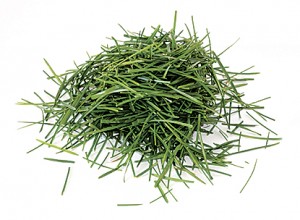Grasscycling 101
Posted Now that spring is here, you may have needed to mow your lawn at least once so far. Did you know that you can actually recycle your grass? It is a technique called “grasscycling”.
Now that spring is here, you may have needed to mow your lawn at least once so far. Did you know that you can actually recycle your grass? It is a technique called “grasscycling”.
Grass clippings and other yard debris account for a large percentage of solid waste in landfills. Although we do not utilize any landfills, we encourage customers to divert as much solid waste as possible from the waste stream. By developing practices such as grasscycling, recycling and composting, you can lower the amount of waste you place at the curb weekly.
What is Grasscycling?
Simply stated, grasscycling is recycling grass clippings left behind after mowing your lawn. If performed correctly, the grass clippings should not detract from the appearance of the lawn. This practice will actually reduce the labor involved in bagging and it will return essential nutrients to the soil.
How do I Grasscycle?
In order to grasscycle effectively, clippings must break down rapidly. In order to do so, the lawn should be mowed frequently enough so that large amounts of leaf residue do not remain on the surface. Especially during the spring when grass is growing quickly, weekly mowing may not be enough.
Things to remember when Grasscycling:
- Mow when the grass needs it.
- Mow often enough that only one-third of the leaf height is removed.
- Keep mower blades sharp.
- Mow when the grass is dry.
For more information on grasscycling, please reference this fact sheet created by the Professional Recyclers of Pennsylvania.
Want to stay up to date on recycling pointers? Be sure to follow our Facebook and Twitter pages. We have also recently added Google+ and Pinterest to our social media outreach, so be sure to follow those pages for regular recycling information.
Consider signing up for our E-News Updates to receive recycling suggestions updated directly to your e-mail inbox.
By mowing more frequently, this doesn’t really reduce the amount of effort required. And the increased frequency also increases the emissions from the mowers.
You bring up a good point. This is simply just an alternative suggestion for your mowing habits. Keep in mind that mowing frequency also depends on grass growth frequency. The increase mowing may only take place during the spring months. Thanks for bringing this up though!